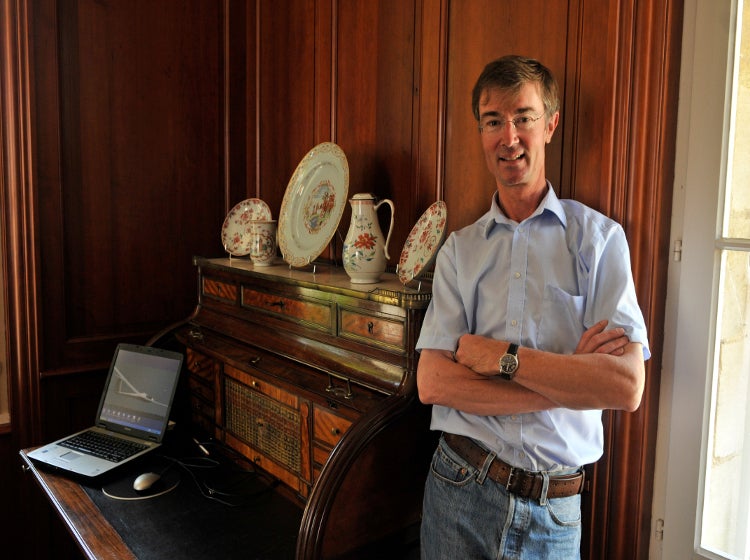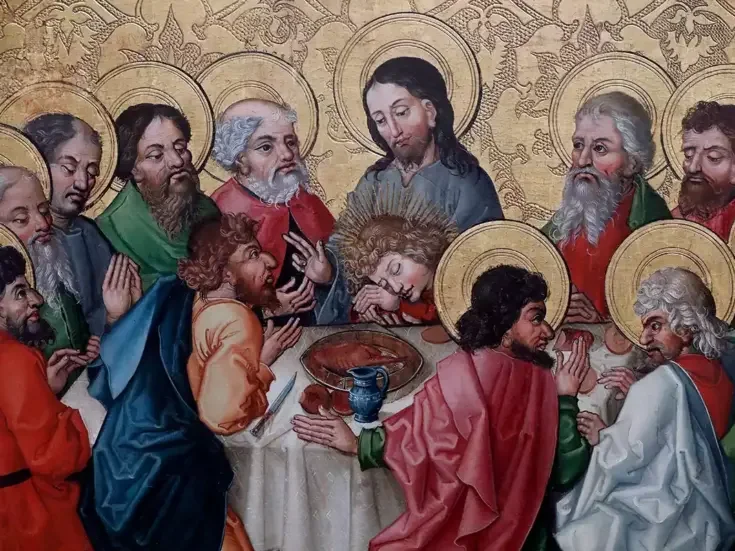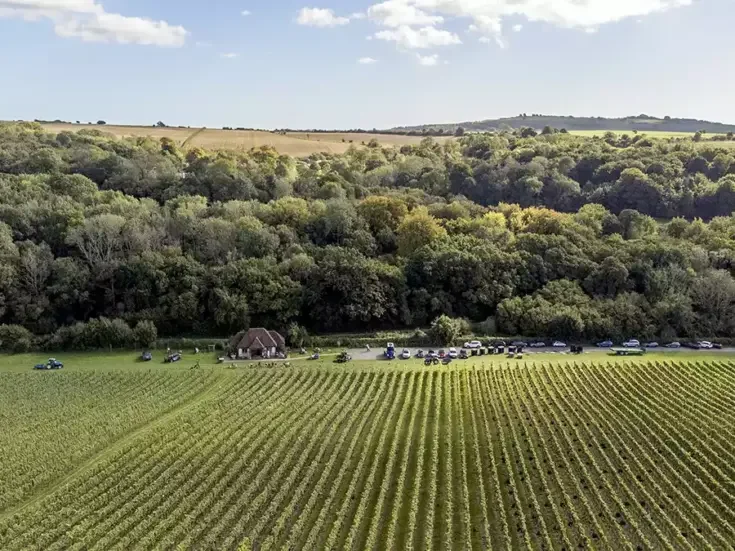
Is it possible for a wine to be truly fine if its character doesn’t change from vintage to vintage?
There is a paradox at the heart of fine wine—we could perhaps call it the Australian paradox, after the country that first brought us the technical perfection that made the paradox really paradoxical—and every year it gets deeper. It is this: Great wine expresses its vintage and, thus, is different every year. As more and more countries, regions, and growers join the fine-wine club every year, so the babble of vintage variation becomes louder and louder. Vintage variation is what serious wine growers want; it is part of their badge of belonging.
Yet the efforts of winemakers and vine growers, for at least the past 2,000 years and probably before, have been directed at smoothing out vintage variation. It is a great thing, in theory, if this year’s wine is different from last year’s. It shows you’re serious; it shows your wine has soul. But in practice, you don’t want it to be all that different. That’s why you install drainage in your vineyard; it’s why you plant windbreaks or seek longer hang-times (there’s little vintage variation in raisins, whether they come expensively from Napa Valley or cheaply from the local supermarket) or green-harvest more or less, according to the year; it’s why you select ever more rigorously and why you employ reverse osmosis; it’s why, if your laws allow, you employ a vast box of tricks—seed tannins, oak tannins, skin tannins, macro-proteins, and many more—to insure you need never be a slave to the weather.
Put these points to European winemakers, and they look baffled at your idiocy. Of course we want vintage variation, they say; that’s what wine is about. We are making wine, not Coca-Cola. So why, you ask them, do you chaptalize or acidify or use reverse osmosis? That’s other people, they say, not us; we only do it, well, occasionally. But put the question to California’s Doug Shafer, and this is his reply: “I’d actually prefer none. I’d prefer no vintage variation. The challenge is to make wine in a similar style no matter what the vintage throws at me. My customers are customers because they trust Shafer. They know the style will be this way every year.”
This is not, though, an Old World/New World divide; it’s more about how and where and to whom wine is sold. Think of the way that Alsace winemakers can get away with unpredictable levels of residual sugar because they have customers who even come knocking on their door in person to chat about the wines and load up their cars. (Suggest that it would be nice to know from the label which wines are dry and which not, and the winemakers usually say, “Our regular customers know which cuvées are which.”) Once you have to rely on sales farther a field, to people whose first contact with you will be mediated by a wine merchant (who may say something like, “We didn’t buy the previous vintage; we didn’t think it was quite up to scratch, but he’s back on song with this one”), you can’t be quite so quirky. And if you rely on people taking your wine off a supermarket shelf with no comforting asides from a wine merchant, then vintage variation can be a liability. As Günter Theis, managing director of Elephant hill in Hawke’s Bay, New Zealand, says, “Top producers in Germany could always sell their wines because they had their regular clients. New Zealand companies, especially at the 30,000-case level, have to export, and so consistency matters more.”
Stretching the limits
Theis’s comparison with Germany is telling. In the decades immediately after World War II, most of Germany was at the extreme of where you could make wine; as many years as not, it was perhaps not so much on the margin as beyond it. That Germany has moved into a much more comfortable place owes more to climate change than to technology. The weather has not done away with vintage variation in Germany, but it’s made it a lot easier to live with. The closer you are to the climatic margin, the more difficult, to the point of impossibility, it becomes to iron out vintage variation—and the more necessary it becomes to try, just to survive. Hence all those modern German vine crossings, designed to produce something sellable despite the cold and wet.
The most comfortable place to be is where you can choose your degree of vintage variation. Steve Skinner, winemaker at Elephant hill, says, “We’re always pushing the boundaries with ripening; we have to work hard in the vineyard. It’s very similar here to the rhône [in that] we have to push the boundaries to get the best out of a variety. But we pulled out a lot of varieties because they would have been consistently inconsistent. Out of a certain range in a variety, you’re not doing it justice. Cabernet and Nebbiolo here are too inconsistent. That goes beyond vintage variation; it’s just bad planning.”
At Villa Maria, they say much the same thing: “We won’t release single-vineyard wines if there’s too much vintage variation. Single-vineyard wines probably don’t need acidification and so on, because we do lots of work in the vineyard, and we might only do 200 cases—we need sites suited to it. We might acidify if we need to, but single- vineyard sites are chosen for their ability to produce good quality consistently. We’ve walked away from some Sauvignon Blanc because the sites were too inconsistent.”
Vintage variation, then, is a sliding scale, with industrial regularity at one end and potential bankruptcy at the other. Choosing where you as a winemaker want to be depends on what you can afford and how daring you want to be. “To be without a wine two years in a row is a problem,” says Villa Maria. “You need to have a wine at least every second year.” And you can only say that if you have more consistent wines as your bread and butter. In Sauternes, unless there’s another source of income, “three bad years in a decade would be very serious for most people,” reckons Christian Seely of AXA Millésimes, which owns Château Suduiraut. At Elephant hill, Skinner probably wouldn’t want to risk that many off-years, but he says, “If we took away vintage variation, we would be disappointed with the result.” Further along the scale, Phil Coturri, vineyard manager of Oakville ranch in Napa, says, “Our job is to find consistent flavors out of complex situations.”
At the furthest extreme of regularity are Non-Vintage Champagne and Tawny Port, with all variation blended out of them—and both with Vintage versions available to allow their winemakers to kick up their heels in perfect safety. Benoît Gouez, winemaker at Moët & Chandon, can afford to produce more extreme Vintage wines because they’re the filling, not the bread and butter. The only Champagne producers who immerse themselves in vintage variation, to the extent of changing cuvées year by year if they feel like it, are the ambitious small family house of Jacquesson since the launch of its 2000-based Cuvée No.728 and growers who produce relatively small quantities and hand-sell it. If you’re going to be quirky, it’s best to stay small.
Varieties of variation
How often is vintage variation a matter of winemakers talking the talk but not walking the walk? What Chilean winemakers call vintage variation, French winemakers call stability, says Marco Pablo Silva of Casa Silva. “We have 90 percent less vintage variation than Bordeaux or Burgundy. Coastal sites here have more vintage variation, inland sites less. Acidity can vary, and color and sweetness can vary a bit.” But Michael Cox, UK director of Wines of Chile, adds that “the boundaries of viticulture in Chile are being pushed farther and farther to all four points of the compass, and viticulture is becoming more and more subject to climatic variation.” Chile, then, is coming from precisely the opposite position to Germany, cautiously jazzing up extremely consistent wines with some variety, while Germany is breathing a sigh of relief at coming out of the danger zone.
And what of Australia, where technical expertise enables winemakers to take what nature has to offer and turn it, year after year, into what many or most of its customers expect? Australian reds until the 1980s varied greatly from year to year; after that, they tended to conform to what the market wanted, which was consistency. And if that meant massive adjustment in the winery, so be it. Australia started talking about terroir before it had properly taken its full implications on board. Vintage variation—which must be an intrinsic part of terroir expression, unless you are in an extremely stable climate—is now creeping back. But nobody is more nervous of vintage variation than a winemaker brought up on consistency. Remember what a struggle it was for Chilean wine growers to decide to move up off the valley floor? When Australian winemakers talk of vintage variation, most are more likely to be talking of it in Chilean terms (stability plus or minus a bit) than in German ones (the tempering of wild extremes).
That’s fine, though, because most wine drinkers—The World of Fine Wine’s readers are, alas, not typical of wine drinkers as a whole—neither want nor understand vintage variation. “Vintage is almost an irrelevance now,” says Cox. “A minority of drinkers still believe in bottle age, in some vintages aging better than others. […] Older people, who are more likely to have been brought up with Old World wines, are used to vintage variation, but the average consumer has changed. People buy for immediate consumption, and they want consistency.”
The right kind of difference
The great argument for the supremacy of famous terroirs is, of course, that they produce wine that is always intrinsically recognizable, whatever the year throws at it. “If you do a vertical tasting of Pichon or Suduiraut,” says Christian Seely, “you will find the Pichon or Suduiraut character running through, but with great vintage variation. Pichon in 2003 was extravagantly hot, in 2004 temperate, balanced, and classic, but both wines are Pichon. We’re not trying to eliminate vintage variation. Pichon was good in 2003 because it has very old vines in deep gravel, and the vines kept functioning as a result. Without that, we might have had too much vintage variation—the variation you don’t want.” If you can persuade winemakers to put a figure on the sort of variation that they do want, they usually agree with Napa Valley’s Delia Viader: “I want vintage variation between seven and ten. I don’t want to make wine to a formula; I want to make a chronicle of what the year brings, and I want a certain personality for that vintage. But I also want the family trait to remain.”
The ideal vintage variation is perhaps that displayed in Bordeaux between 2009 and 2010. Two great years, totally different in style—it couldn’t be better: vintage variation but consistency of quality, and brought about by a vast amount of work in both vineyard and winery, all aimed at tempering the bad points of each year and accentuating the good points. The tannins in many examples of 2010 Bordeaux would have been impossible had maceration times and pumping-over not been monitored and adjusted with great sensitivity.
But, you may argue, there is nothing remarkable in monitoring and adjusting, from vineyard to bottle. Any good winemaker aims to make the best wine possible in any given year. If greater vintage consistency is the result, then it’s because de deficiencies are being eradicated, not because winemakers are aiming for greater consistency per se. This is partly true: We have fewer off-vintages than we used to, because viticulture is more precise and more expert, and wine science is better understood—and the primary aim of all that research has been to improve wine quality, not to make it uniform.
Sometimes, one comes across a winemaker who embraces vintage difference with such passion that he throws other winemakers into sharp relief. Alexandre Thienpont is one such. A vertical tasting of Vieux Château Certan reveals wines of such restraint as to be almost self-effacing—it would be all too easy to overlook them in a big blind tasting. Yet they still have all the concentration and all the staying power one could possibly ask for, and every vintage is very different. “The year is as important as the terroir,” Alexandre says. “You have to let the wine tell its own story. It would be easy to make the same wine every year. I would divide the property into ten batches [VCC’s 14ha (35 acres) are currently divided into 23 parcels], and I would adapt the treatment of each to the aim I wanted, rather than let nature tell its own story.” In other words, the science and the technology, all the gizmos of a modern winery, are neutral, and you can either use them to achieve the aim of greater consistency, or you can do as Thienpont does: “I have the maximum technology you can expect in a cellar, and it’s there so that I can take more risks. It takes wine to a new level. The more you use technology, the more you understand the soil.” he works on a small scale, however; is it possible to be that detailed on a large scale? Certainly, he says, and he cites châteaux Latour and Margaux. “I have a six-cylinder engine, but acute; they have eight- to 12-cylinder engines— that’s real power.”
Which way is fashion turning—toward more vintage variation or less? At least at the top end, it would be nice to think that more winemakers will be imbued with the Thienpont philosophy of using ever more detailed technology to find greater detail in their terroir and take more risks. There are signs that that is happening—and it’s the most welcome paradox of all.







